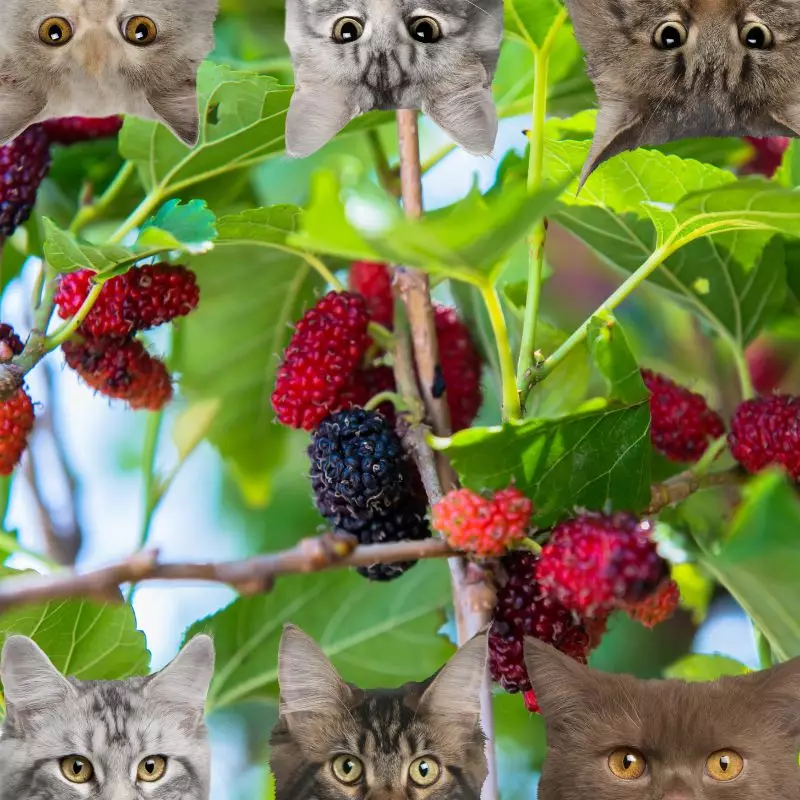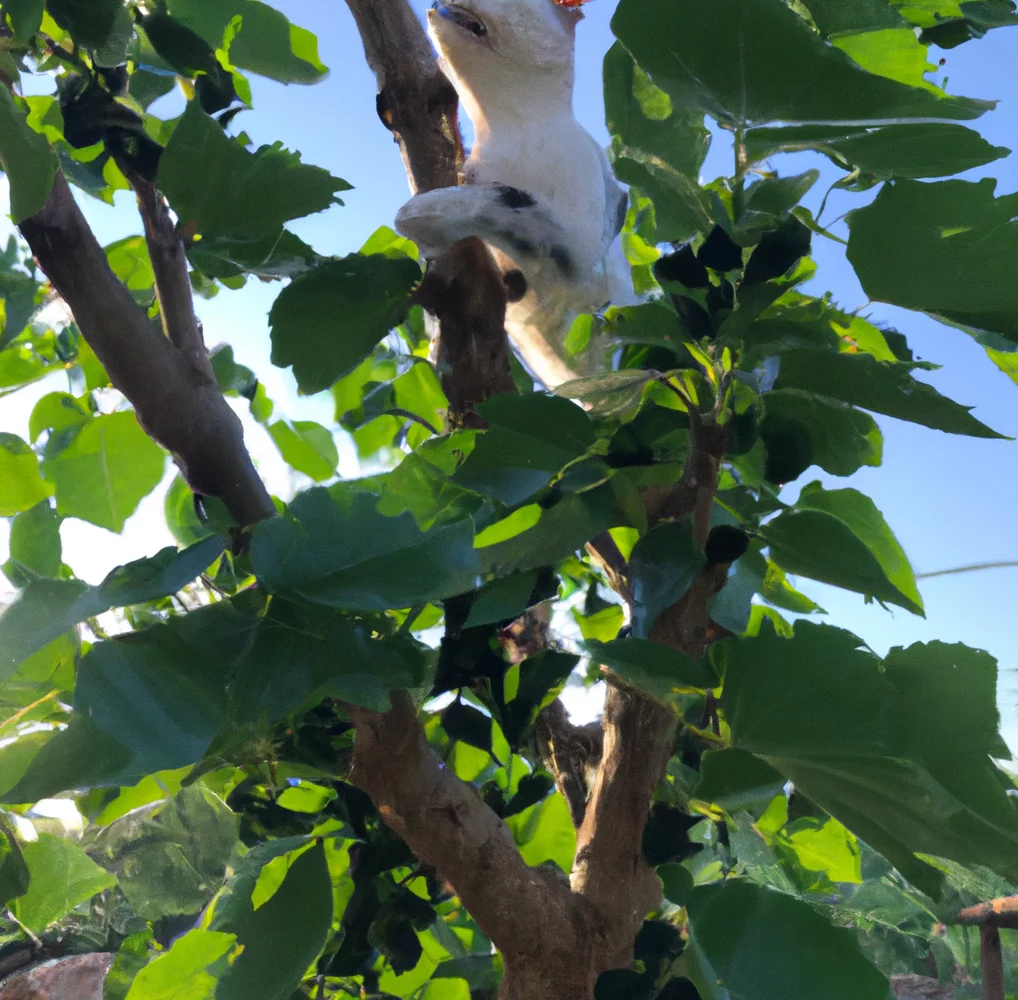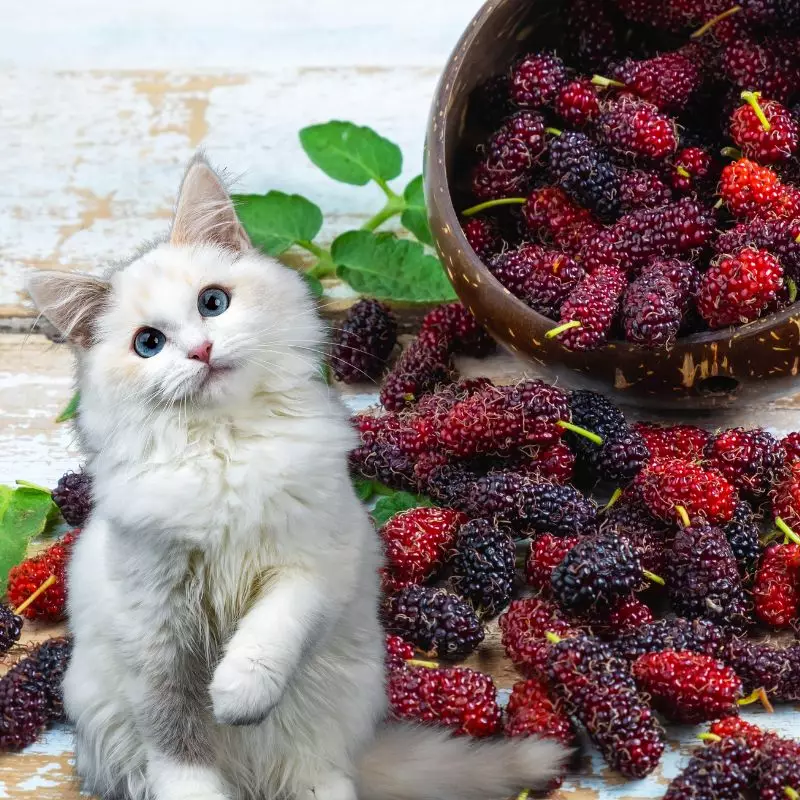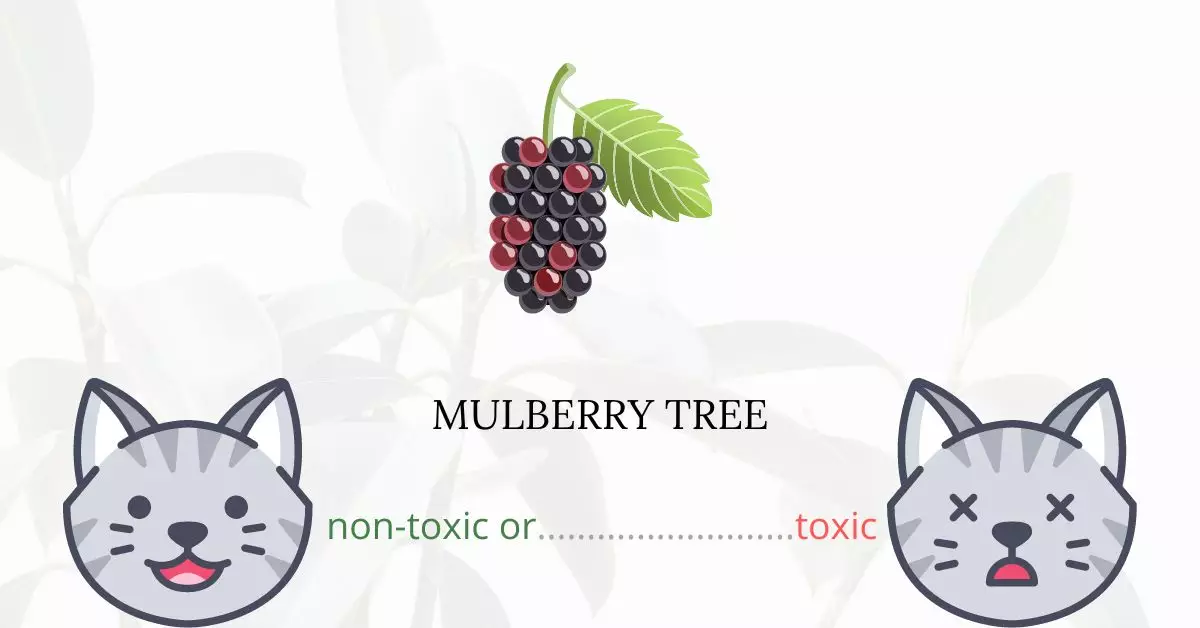The mulberry tree is not toxic to cats. It is safe for feline companions to be around these trees without concern for their well-being.
This conclusion is drawn from extensive collaboration with a team of experienced DVMs (doctors of veterinary medicine). Their expert insights have allowed us to provide accurate and up-to-date information about the potential risks associated with various plants, specifically the Mulberry Tree in this context. Additionally, our research is corroborated by high-authority websites such as ASPCA and PetMD.
It’s worth noting that the mulberry tree is also listed on the ASPCA’s (American Society for the Prevention of Cruelty to Animals) list of non-toxic plants. However, even with its classification as safe, cat owners are advised to exercise caution. While the tree itself may not be toxic, it is always best not to let your feline friends consume any part of it or any other plants without verification of their safety.
Can Cats Eat Mulberry Tree?

It is not harmful to felines to eat a tiny portion of a mulberry tree. However, this does not mean that you should allow your kitties to munch on its branches or leaves any time they want.
Remember, cats are carnivorous species. Carnivores cannot completely process plant materials in their stomachs because they lack the proper enzymes that can do that task. If cats happen to eat a large portion of plants, it may lead to indigestion and other GI tract problems.
What is Mulberry Tree?

Morus is a flowering plant genus in the Moraceae family that includes numerous species of deciduous trees known as mulberries that thrive wild and in cultivation in many temperate global locations.
In general, there are 64 recognized species in the genus, three of which are well-known and are apparently called for the fruit color of the best-known cultivar: white, red, and black mulberry, each of which has multiple cultivars.
Mulberries grow quickly while young and can reach a height of 24 meters (79 ft). The leaves are simple, alternately placed, and frequently lobed and serrated on the border. Lobes are more prevalent on young shoots than on older trees.
The mulberry produces collective fruits, measuring around 2-3 cm in length. Fruits that are immature are white, green, or pale yellow. When completely mature, the fruit transforms from pink to crimson, then dark purple or black, and has a sweet flavor.
Keeping Cats Away From Mulberry Tree

Try utilizing sounds to deter your cats from your garden. Wind chimes, motion-sensitive bells, or simply rocks or stones in a jar that rattle when your kitten approaches are all options. There are also other motion-activated devices, which emit a frequency that cats cannot tolerate but is inaudible to people.
A light sprinkling with a spray bottle of water can assist cats in breaking their positive correlation with your garden. Motion-activated sprinkler systems can also deter cats. Just remember to turn them on and follow the instructions during summer water shortages.
Cats dislike citrus scents. To drive them away, toss citrus peels into the garden soil. You may also spread brewed coffee grinds over the soil. If you ask, most local coffee shops will be happy to give you free huge bags of coffee grinds!
Plants to Avoid For Your Cats
If you are a cat owner and unsure if the plants growing in your yard are harmful to your cats, check out this list of toxic plants for cats. You can also check our list of non-toxic plants for cats.





